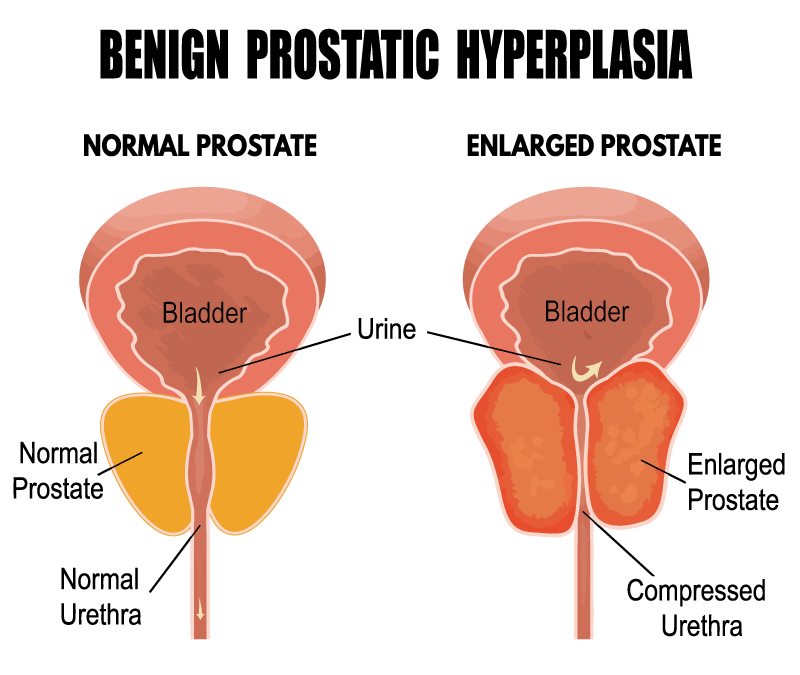What is Benign Prostatic Hyperplasia?
Benign prostatic hyperplasia (BPH) is an enlarged prostate. The first growth occurs early in puberty, when the prostate doubles in size. The second growth phase begins around age 25 and continues during most of a man’s life. BPH symptoms begin during this growth and can worsen with age. The prostate size, however, does not always determine symptom severity. Some men with large prostates can have minimal symptoms while some with smaller prostates may have severe symptoms.
BPH can be associated with bothersome lower urinary tract symptoms (LUTS) that can interfere with normal activities and affect quality of life.

BPH Pathway Steps
BPH can be associated with bothersome lower urinary tract symptoms (LUTS) that can interfere with normal activities and affect quality of life.
What are the symptoms of BPH?
- The need to urinate at night
- Feeling of incomplete emptying
- Frequent or urgent need to urinate
- Weak urine stream
- Dribbling of urine
- The need to stop and start urinating several times
- Trouble starting to urinate
- Straining while urinating
Less common symptoms of BPH
- Urinary tract infection (UTI)
- Urinary retention – inability to urinate
- Blood in the urine
What are the risk factors for BPH?
Risk factors for prostate gland enlargement include:
- Aging: Symptoms usually begin after age 40. About half of men between 50-60 have BPH and up to 90% of men over 80.
- Family history: You are more likely to have prostate symptoms if a blood relative, such as a grandfather, father or brother has BPH. The risk is increased if your relative had severe symptoms requiring treatment before the age of 60.
- Ethnic background: Asian men are less likely to have BPH than white and black men. Black men may experience symptoms at a younger age.
- Diabetes and heart disease: Studies show that diabetes, as well as heart disease and use of beta blockers, might increase the risk of BPH.
- Lifestyle: Obesity increases the risk of BPH. Exercise and a healthy diet can lower your risk.
Treatment Pathways for BPH
BPH evaluation and treatment are standardized across the nation and follow best practice guidelines. Using electronic care pathways, we ensure patients have access to the most up-to-date educational information. You may speak with a navigator on the phone whose job is to oversee your progress through the pathway and facilitate communication between you and your provider. The electronic BPH pathway maximizes patient education, compliance, and treatment success. This may be through behavioral modification, medications, testing or advanced therapies.
The clinical pathway for BPH starts with the least invasive options involving behavioral changes, followed by a trial of medication. If no improvement, then testing and advanced treatments are offered.
